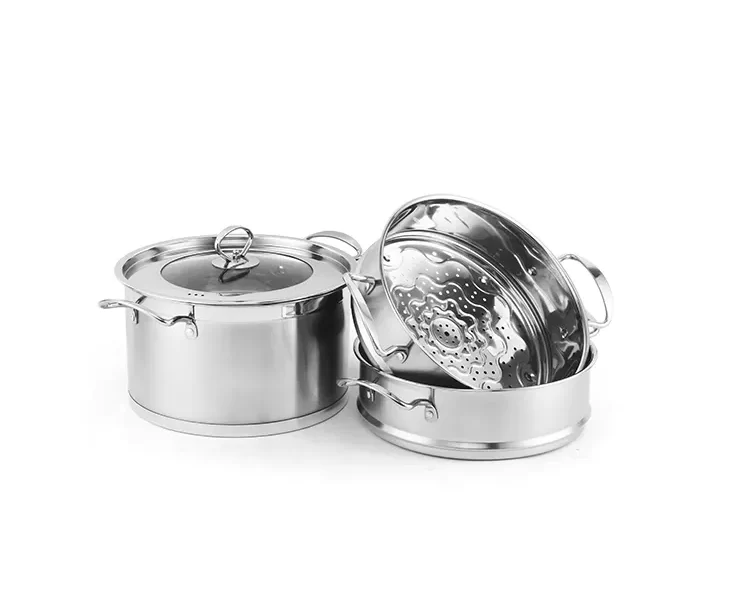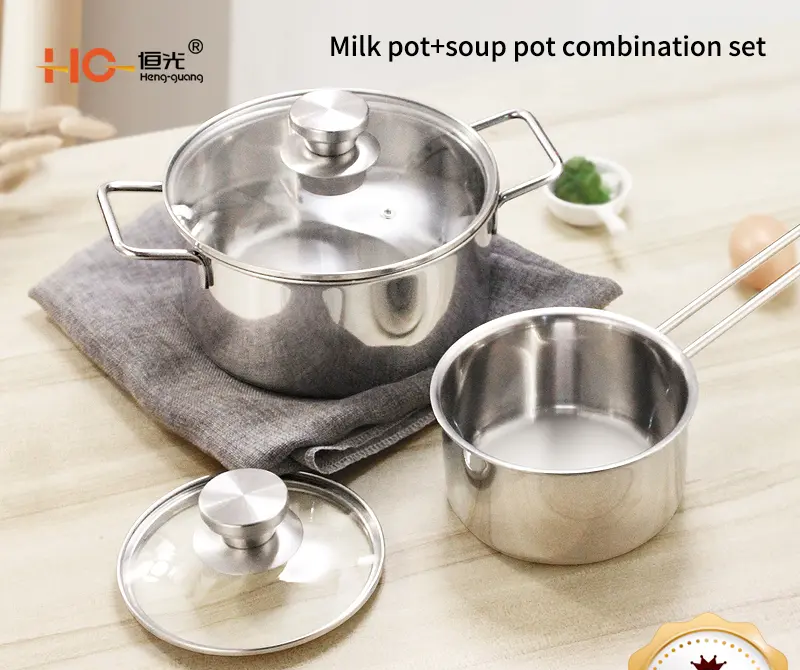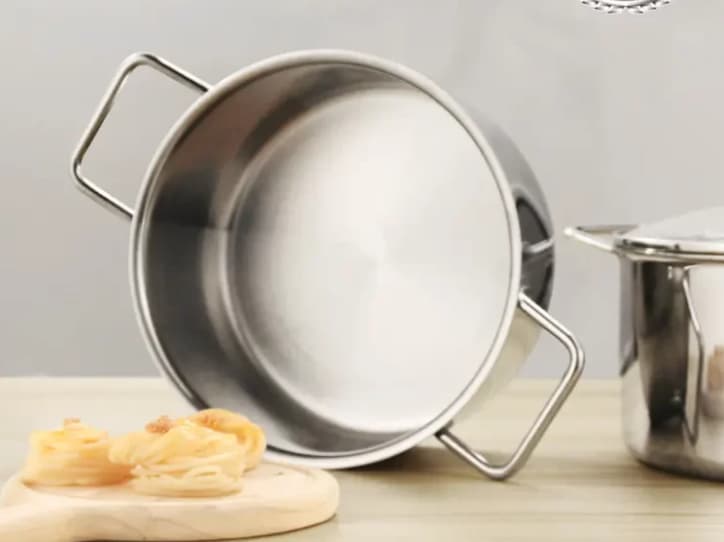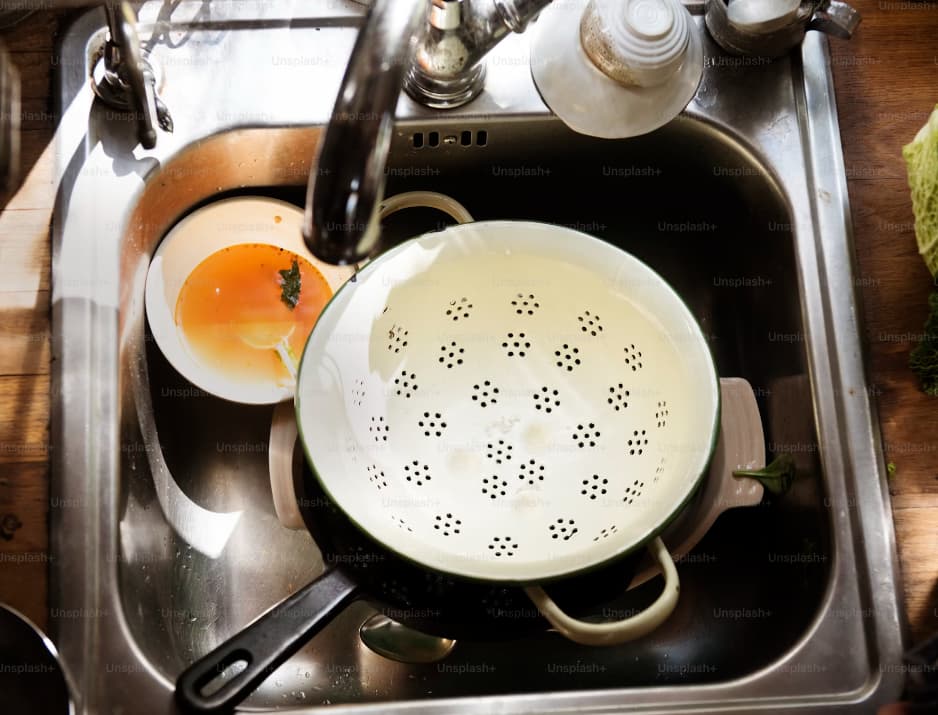
There are many reasons to choose stainless steel cookware, especially when considering a switch to non-stick cookware, it is important to understand the basic characteristics of stainless steel.
Many people associate stainless steel with shiny pots in professional kitchens. Not only does it have visual appeal, it also symbolizes the skills and durability of professional chefs. Its durability makes it resistant to scratches, corrosion and high temperatures, making it suitable for all cooking methods. In addition, stainless steel does not react with food, which can maintain the original taste of food and ensure the quality of each cooking.
In short, stainless steel cookware is an ideal choice for cooking enthusiasts and can enhance your cooking experience. As a professional stainless steel kitchenware manufacturer, I will take you to in-depth knowledge about stainless steel cookware.

Is Stainless Steel Cookware Safe
There are no health risks associated with using stainless steel cookware. The material is thermally stable and does not react with the food or emit harmful substances. This is the reason why it is widely used in both home and industrial kitchens.
Stainless steel is non-toxic in nature because it has been developed from three principal components: iron, chromium and nickel. Iron is vulnerable to corrosion and rust, but a layer of chromium oxide coats iron to form a protective barrier. This coating is inert and does not react with food or beverages even when cooking, hence no toxic chemicals are leached into the food.
However, it is important to point out that such cookware is potentially dangerous when made of bad grade steel or has scratches. For instance, worn or scratched stainless steel pans have the potential to leach nickel or chromium into food. This leaching is not too extreme for the general population. Those who cannot tolerate nickel may select stainless steel without it.

What Stainless Steel Is Best For Cookware
For someone buying cookware, it is essential to select the correct grade of stainless steel. Cookware manufacturing use two common grades of stainless steel, commonly referred to as 304 (18/8 or 18/10) or 316. The stainless steel percentages 18/8 and 18/10 are the Corrosion Resistant properties of the steel which contain 18% CR and 8% Ni & 10% Ni respectively. The nickel content in the cookware determines how corroded the cookware will become over a period of usage. Although 18/8 mild steel kitchen wares suits most of the users, grade 18/10 kitchenware will be more useful for other higher quality kitchenware applications because they resist corrosion better.
316 stainless steel is known as marine grade and contains molybdenum, which has stronger corrosion resistance and is particularly suitable for cooking acidic or savory dishes in harsh environments. However, this material is more expensive and is generally less common in home cookware.
In addition to the grade of stainless steel, the construction of the cookware is equally important. “Cladding” refers to the multi-layer design of stainless steel cookware, which is usually composed of heat-conducting metals (such as aluminum or copper) wrapped around stainless steel. This construction ensures a non-reactive surface and even heat distribution for the cookware, making full use of the advantages of each material to compensate for the disadvantages.
For instance, a widely accepted three- ply structure consists of two layers of steel enclosing a layer of another lightweight and heat conducting metal. The steel cook ware also has the added advantage of ease in handling due to its light weight and perfect heat conduction. Some of the brands however, go to five or even seven layers of this design, which increases the user durability and heat retention of the cookware. It is therefore recommended that you understand the above guidelines if you wish to make an appropriate decision in your choice of cookware.
How to Clean Stainless Steel Cookware Properly?
Routine cleaning is vital: Once you’re done cooking in stainless steel pots and pans, scrub ‘em up using warm sappy water and a soft cloth. Rinse, towel dry, to prevent water marks from forming.
Clearing away burnt food: In case some food loiters on the cooking utensils, let them sit in warm soapy water for a few hours and then take non-abrasive cleaning sponge or a scrubbing pad and gently scrape the remains away.
Prevent scratches: Steel or hard pads should not be utilized instead the surface can be scratched. Although surface scratches are unsightly, they can inflict greater harm with time.
How to remove water stains: Once the cookware is washed, order it ended up with a towel soaked in white vinegar or lemon juice as these sun dried the pot in order to prevent water stains.
Shining: Gentle rubbing with soapy water can restore the luster of stainless steel cookware.
Using a Dishwasher: Most stainless steel pots and pans are labeled dishwasher safe, we recommend hand washing to maintain a nice finish. This is because the chemicals in dishwasher detergents can be abrasive and may cause the finish to become hazy after some time.

How To Repair Stainless Steel Cookware?
Restoring stainless steel cookware entails the elimination of various stains, more often than not coloring variations, and tiny scuff marks. Below are some constructive tips:
General discoloration: Combine baking soda and water into a paste. Spread onto the affected spot and rub using a soft cloth/a sponge. In the end, wash and wipe completely.
Burn marks: Take baking soda and sprinkle some on the pot’s bottom, add a bit of white vinegar, allow it to froth, and carefully scrub the area using a non-scratch pad.
Removing stubborn stains: Stainless steel cleaner can be used to treat more stubborn stains, always following the manufacturer’s instructions. Always scrub in the direction of the metal grain to avoid scratches.
Restore the former glory: Consider purchasing a stainless steel polish filled in a spray can to use on the objects. Olive oil works perfectly as an alternative. A small amount of oil is applied on one side of the cloth and any excess wiped off with another clean tissue.
Preventing damage: To avoid damage, it is recommended not to use metal utensils, but silicone, wooden or plastic spoons.
Looking For High-Quality Stainless Steel Cookware?
When searching for stainless steel cookware that you would use for years, Hengguang has a line of robust products that can serve a and various cooking purposes. Being an expert cook ware manufacturer, we do not stop at designing beautiful looking cook ware rather we engage in the research and innovation as well as production of beautiful and high-performance cook ware, pressure cooker, frying pans, and baking pans, among others, and so we have confidence in all our products and their kitchen performance.
Check out our collection of wholesale stainless steel cookware series and make Hengguang the assistant in your kitchen and experience a satisfying cooking adventure. It does not matter if it is for household purposes or bulks in commercial use, you get from us long lasting and fully outfitted equipment that makes perfect dishes in the kitchen.Welcome B2B buyers to contact us.